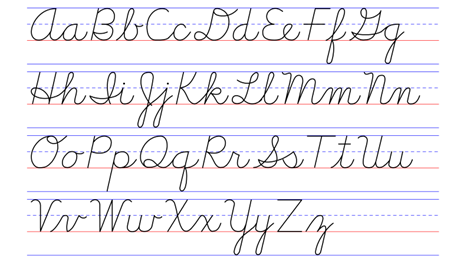
That may not mean much to you, but it caught my eye because it’s rather unusual in our modern era. While this movie isn’t targeted to a younger audience, I wonder whether they’d even be able to read what they saw on the screen in that form. We have a whole generation that is growing up with no penmanship skills because they learn how to use a keyboard when they’re very young instead of putting pen or pencil to paper. That’s not necessarily a bad thing, just a comment on changing times.
To be honest, although I grew up in an era when we had to endure hours of elementary school lessons on how to write in both block letters and script, I never grasped the latter all that well. I just couldn’t form the curves and swirls that make well-formed cursive letters legible — it was probably because I had no artistic ability whatsoever. I still don’t. To this day, when I have to write anything on paper, I print it, and if you asked me to draw a person, it’s going to be no better than a stick figure. When I have to sign something, you might recognize the first letter of each word, but the rest is nothing more than a squiggly line with a dot approximately over where the “i” in my last name would be.
Sure, cursive may be faster, because you don’t have to pick up your pen from the paper, but in what profession will that be a prerequisite for success? Unless you’re planning on becoming a wedding invitation calligrapher, the ability to write cursive isn’t a talent you need to highlight on your resume.
Our nation started with Thomas Jefferson scratching out the Declaration Of Independence with a quill on parchment. Over a century later, John Loud invented the ballpoint pen so that your parents could give you a nice gift for your bar mitzvah. Then came manual (and later electric) typewriters, followed immediately by a population of people walking around with ink from the ribbon that would not rub off their fingertips. Now, as we’ve progressed into the digital age, we use keypads on all of our electronic devices, with the two-thumb strategy replacing the old index finger hunt-and-peck. Even that may soon be a thing of the past as voice-to-text technology improves, led by our reliance on virtual assistants like Siri and Alexa.
To this generation, the very notion of using our hands to write something (in cursive or otherwise) will soon be as antiquated as using Ko-Rec-Type or Wite-Out. And don’t even get me started on carbon paper.
